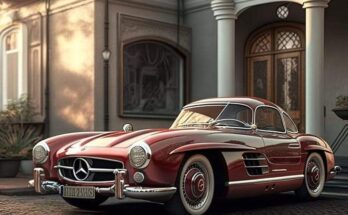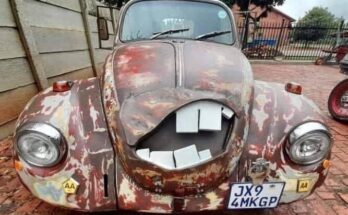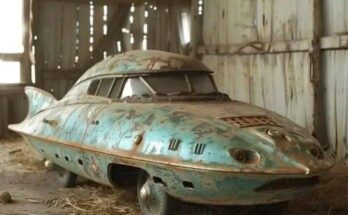The 1951 Buick Model 76C Roadmaster Convertible is one of the most iconic and luxurious American automobiles of the early 1950s. A true classic in every sense, the Roadmaster Convertible embodied post-war opulence, style, and engineering excellence. Buick, as one of General Motors’ premium brands, ensured that the 76C Roadmaster was an elite vehicle, offering unmatched comfort, powerful performance, and a presence that commanded attention on the road.

Design and Styling
The design of the 1951 Buick Roadmaster Convertible was a remarkable representation of the era’s fascination with chrome, curves, and grandeur. Measuring over 18 feet in length and weighing more than two tons, the Roadmaster boasted an imposing presence. Its sweeping lines and smooth contours gave it an elegant yet muscular look. The prominent front grille, often referred to as the “toothy” grille due to its vertical chrome bars, was a signature feature of Buicks from this period.
One of the most distinctive elements of the Roadmaster’s design was the “VentiPorts,” or portholes, located on the front fenders just behind the wheel wells. These served no functional purpose but were a stylish touch that became a hallmark of Buick design. The 1951 model featured four VentiPorts per side, signifying that it was equipped with Buick’s powerful straight-eight engine.
The convertible top of the 76C was an elegantly tailored fabric roof, which could be lowered at the touch of a button, making open-air cruising effortless. With the top down, the Roadmaster exuded a sense of freedom and sophistication. The large wraparound windshield, a relatively new design feature at the time, provided improved visibility while adding to the car’s modern appeal. Buick’s design team incorporated chrome trim generously but tastefully, accentuating the car’s streamlined appearance.
Interior Luxury
Stepping inside the 1951 Buick Roadmaster Convertible was like entering a first-class lounge on wheels. The spacious cabin was meticulously crafted, offering seating for six adults in plush leather upholstery. The seats were available in a variety of colors, allowing customers to personalize their Roadmaster to their taste.
The dashboard was a masterpiece of design and functionality, featuring an array of gauges set in chrome bezels. The speedometer, fuel gauge, temperature gauge, and clock were all neatly arranged, ensuring that drivers had all the necessary information at a glance. Buick’s signature “Dynaflow” transmission was controlled by a column-mounted shifter, making gear changes smooth and effortless.
Additional features included a deluxe radio with push-button tuning, an electric clock, and an optional heater and defroster. The power windows and power seat adjustment further enhanced the feeling of luxury, making the Roadmaster Convertible one of the most advanced cars of its time.
The Roadmaster’s Place in 1950s America
The early 1950s were a time of economic prosperity and optimism in the United States. The automobile industry was booming, and American manufacturers were producing some of the most luxurious and technologically advanced cars the world had ever seen. The Buick Roadmaster Convertible was aimed at affluent buyers who desired comfort, style, and prestige.
Owning a Roadmaster Convertible in 1951 was a status symbol. It was the kind of car driven by Hollywood stars, business magnates, and dignitaries. Buick’s advertising campaigns emphasized the car’s sophistication and elegance, often depicting it in scenic settings, highlighting its appeal as the perfect car for leisurely drives along the coast or glamorous city outings.

Collectibility and Legacy
Today, the 1951 Buick Model 76C Roadmaster Convertible is a prized collector’s item. Classic car enthusiasts admire it for its design, luxurious features, and historical significance. Well-preserved examples and meticulously restored models command high values at auctions, reflecting the car’s enduring appeal.
The Roadmaster remains an icon of American automotive history, representing the pinnacle of Buick’s craftsmanship during the golden age of motoring. Whether showcased at classic car shows or driven along scenic highways, the 1951 Roadmaster Convertible continues to capture the imagination of enthusiasts and collectors alike.
Conclusion
The 1951 Buick Model 76C Roadmaster Convertible stands as one of the most elegant and well-engineered automobiles of its era. From its striking design and opulent interior to its powerful straight-eight engine and smooth Dynaflow transmission, every aspect of this car was crafted to deliver an unparalleled driving experience. It remains a timeless classic, a testament to Buick’s commitment to luxury, innovation, and excellence. For those fortunate enough to own one today, the Roadmaster is not just a car—it is a piece of automotive history, a rolling work of art that embodies the glamour and sophistication of the 1950s.


